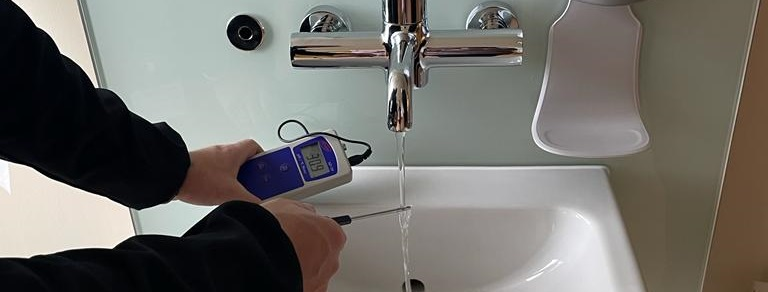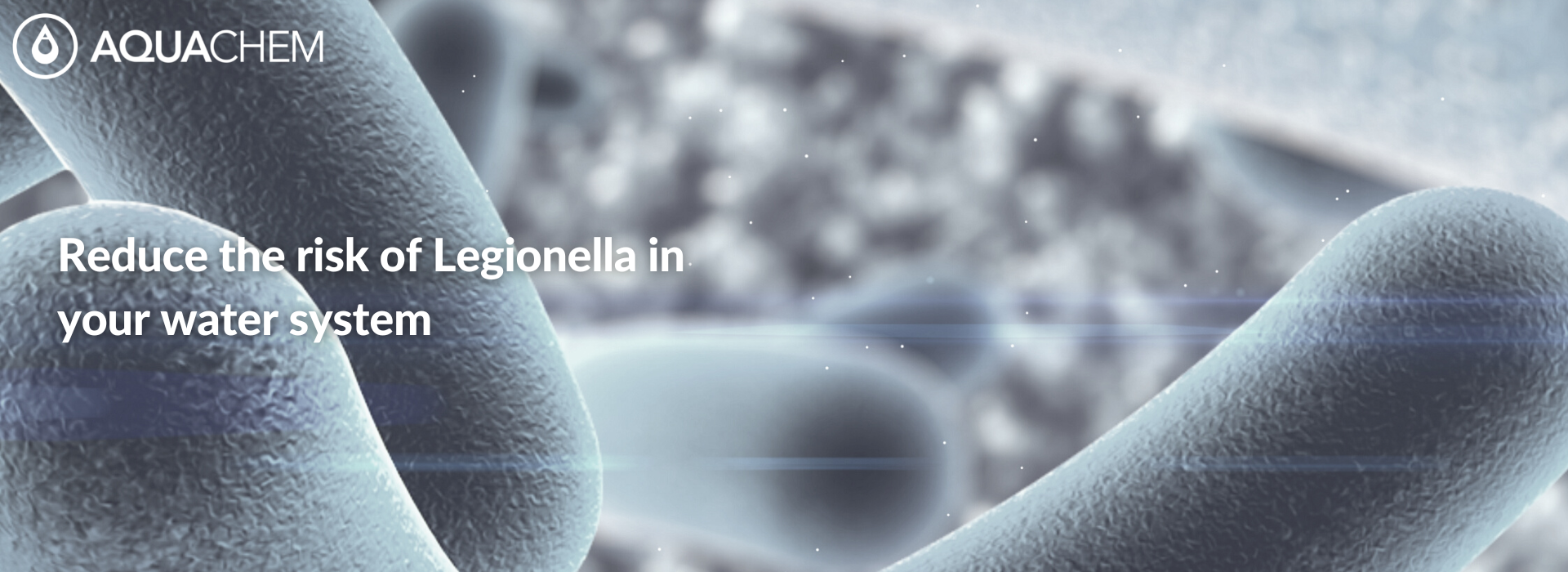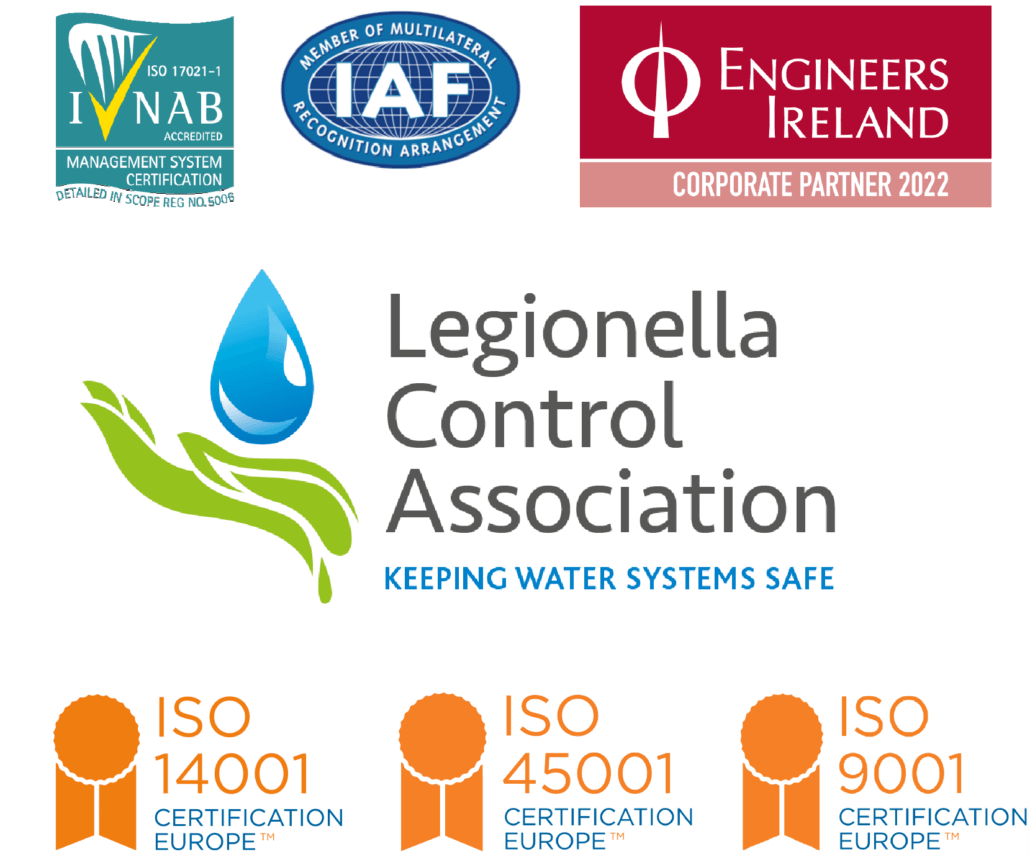Controlling Legionella bacteria in hot and cold-water systems, cooling towers and other water systems is essential if you are to ensure the safety of people in your workplace and/or facility are protected.
Legionella bacteria can cause an outbreak of Legionnaires’ disease which is a potentially fatal type of pneumonia, contracted by inhaling airborne water droplets containing viable Legionella bacteria. These droplets can be spread, for example, by: hot and cold water outlets; atomisers; wet air conditioning plant; and whirlpool or hydrotherapy baths.
Anyone is susceptible to the disease but the elderly, smokers, alcoholics and those with cancer, diabetes or chronic respiratory or kidney disease are at more risk.
Where can Legionella grow
Any water-based system, which has the right environmental conditions, has the potential to be a source for Legionella bacteria growth, below are a list of places where it can be found:
- showers, taps and toilets
- clinical humidifiers, respiratory and other therapy equipment
- cooling towers and evaporative condensers
- spray washing equipment and high-pressure hoses
- ornamental fountains and water features, particularly indoors
- spa pools, whirlpool baths or therapy pools
- firefighting systems such as sprinklers and hose reels
- portable ultrasonic scalers
While it can be found in these places there is a bigger risk of it being found where there is a presence of complex water systems and facilities which have:
- old or redundant pipe work or fittings
- complex lengthy pipe systems
- poorly maintained wet air conditioning systems
- intermittently used areas such as premises not used over a weekend or temporarily closed wards or departments (healthcare)
How Legionella grows
Legionella bacteria will multiply more readily in stagnant water or where there is very low water flow through the system. Example: Post – covid where large office blocks were empty for a number of months with no water flow compared to the flow Pre- Covid = an ideal breeding ground for Legionella.
This also is relevant in the case of “Dead Legs.” This is where pipework has been cut off but still there with no water flow which allows the bacteria to grow.
Temperature is another key ingredient for Legionella growth. Legionella bacteria will multiply in the water if temperatures is between 20°C and 45 °C. Colder temperatures mean the bacteria fall dormant and anything higher than 60°C will kill them.
Where the risk cannot be prevented through elimination it must be adequately controlled and managed special measures need to be introduced to reduce the risks as much as possible.
Did you know
Bacteria grow by dividing in two. They can do this every ten to twenty minutes, a process known as Binary Fission and in ideal conditions one bacterium may become one million in just 3 and a half hours
Reducing the risk of Legionella
It is important to note that the spread of Legionnaire’s disease is very much preventable. The best way to prevent Legionella is to reduce the amount of stored water.
As mentioned, low temperatures (under 20°C) allow the bacteria to survive but prevent them from multiplying, temperatures over 60°C cause the bacteria die
As a general rule of thumb, you should remember the following:
- Keep hot water hot
- Keep cold water cold
- Keep the water moving
LRA
The first thing that should be done to control exposure to Legionella bacteria is to carry out a Legionella Risk Assessment. This should be done by a competent person and will identify and assess the risk of Legionella on your premises.
Once the risk of Legionella has been identified and assessed, the second step in the process is to begin the process of managing the risk.
The Health & Safety Executives ACOP L8 requires that the Duty Holder should appoint a Legionella ‘Responsible Person’ to take day-to-day responsibility for controlling Legionella bacteria and Legionnaires’ disease. This will involve implementing the recommendations from the risk assessment, selecting contractors to maintain the system and arranging for routine monitoring as required.
Temperature
Temperature control is a key method for reducing the risk of Legionella in water systems. By keeping the temperatures in the water system outside of the 20 – 50°C range the bacteria are less likely to grow.
- Cold water systems should be maintained at a temperature < 20°C.
- Hot water should be stored at 60°C and distributed so that it reaches a temperature of 50°C within one minute at the water outlets
Sentinel taps (that is the first and last taps on a hot water recirculating system and the nearest and furthest taps from the storage tank on a cold water or a non-recirculating hot water system) and also any other taps that may present a risk should have their temperature checked monthly.
A representative number of taps should be checked annually on a rotating basis. Cold water should be below 20°C after running the tap for up to two minutes and hot water should be above 50°C within one minute of running the water. You should also check the hot water storage cylinder temperatures every month and cold-water tank temperatures at least every six months.

Flushing
As mentioned above, unused or little-used outlets and pipes are ideal environments for Legionella bacteria to grow and to reduce the risk these outlets (including showerheads and taps) should be flushed at least weekly, or better still removed where possible. Dead legs or dead ends in any pipework installations also should be removed.
Cleaning & Disinfection
The presence of sediment, sludge, scale and other material within the water system can facilitate the growth of Legionella and can provide protection for the bacteria from temperatures and disinfectants that are used to kill or inhibit growth of the bacteria that’s why regular cleaning and disinfecting should take place. Cold water system tanks should be visually inspected bi – annually with Cleaning & disinfecting annually. Water cisterns and storage tanks should be kept covered, insulated, clean and free of debris.
Water Treatment Programme
Proper control of legionella in your water systems will only be as good as the person who takes responsibility for this and the on-going management and control processes. Water samples should be taken and analysed for Legionella frequently and limiting exposure to water droplets and aerosols will also help minimise the risk of exposure.
A proper water treatment plan will also ensure the correct chemicals (and amount of) is being used in your system. Having a proper action plan also requires you to maintain a water log book for the building, this is a useful way of recording water temperatures and other checks to demonstrate that you are managing risks appropriately.
Summary
Activities or systems that could potentially lead to expose of Legionella Bacteria should be avoided so far as is reasonably practicable, if this is not possible measures to control the risk must be implemented. Precautions should, where appropriate, include the following;
- Avoid water temperatures between 20°C – 45°C
- Avoid the use of materials that promote the growth of bacteria
- Ensure the correct and safe operation and maintenance of the water system
- Control the release of water spray
- Avoid water stagnation which may encourage the growth of biofilm
- Maintain the cleanliness of the system water
- Implementation of a water treatment programme
Here at Aquachem we have our own inhouse Legionella Risk Assessors who carry out thorough in depth assessments to improve your systems and reduce the risk of Legionella. Get in touch with us today to book in your assessment and start your plan in minimising the risk of Legionella in the building.








